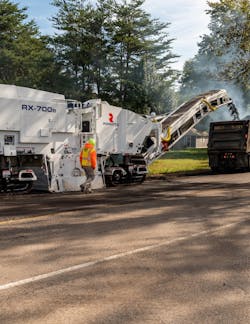Road maintenance industry fears retirement, embraces new funding
During an industry executive panel at the ARRA-AEMA-ISSA annual meeting in Cancun, Mexico, most of the talk centered around forming relationships.
Like any segment in the road and bridge industry, the lack of skilled workers and funding continue to be the most pressing issues.
The asphalt recycling, slurry and emulsion industries are losing quality workers to retirement, and recruiting young talent has not been easy.
“You don’t find a lot of millennials, which is the largest percentage in the workforce right now,” said Doug Ford, president of Pavement Coatings and a past president of the International Slurry Surfacing Association (ISSA), said. “That is bad news for us because in 10 years what are we going to do? They [millennials] have to become the leaders. We need to engage with these people.”
With the FAST Act winding down, the talk turned heavy in regards to the future of road and bridge funding. Ryan Essex, president of Miller Paving, believes now is the time those in the road recycling, emulsion and slurry businesses to capitalize on the prospect of an increase in funding.
“We saw what happened when they had the bridge failures; a lot of spending went towards the bridges,” Essex said. “As we see the failures on the highways, that gap will get large enough for people to see. Our stuff is what people are going to be relying on to fix this problem.”
John Rathbun, vice president of sales for Cutler Repaving Inc., moderated the panel and reminded members of the importance of reaching out to state representatives and senators in the coming year as Congress looks for ways to fix a dying Highway Trust Fund.
“We cannot do nothing and we have to engage,” said Rathbun. “They come out to one of your projects and your plant to see what you are producing and that makes a tremendous impact. We have really got to double down on our efforts if we are going to be successful.”
